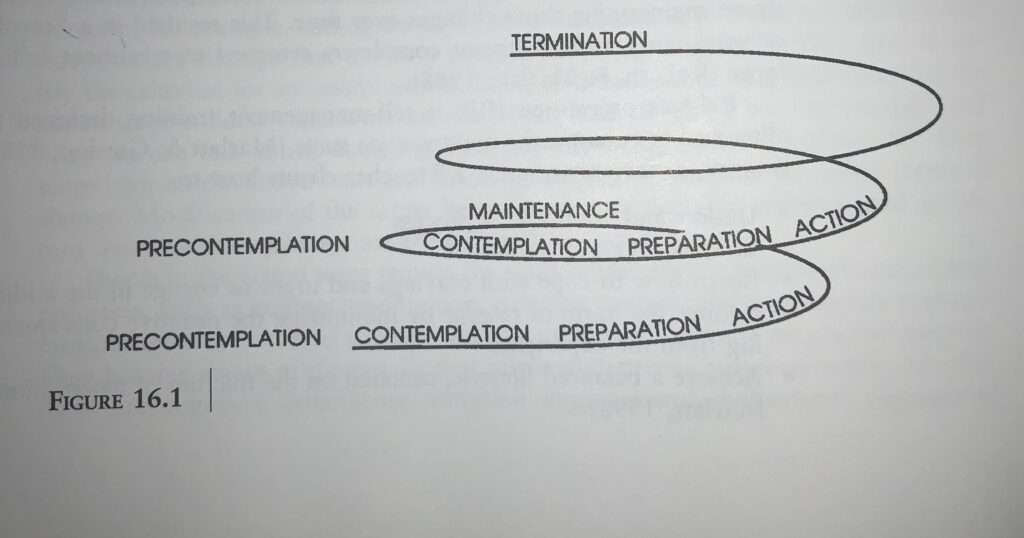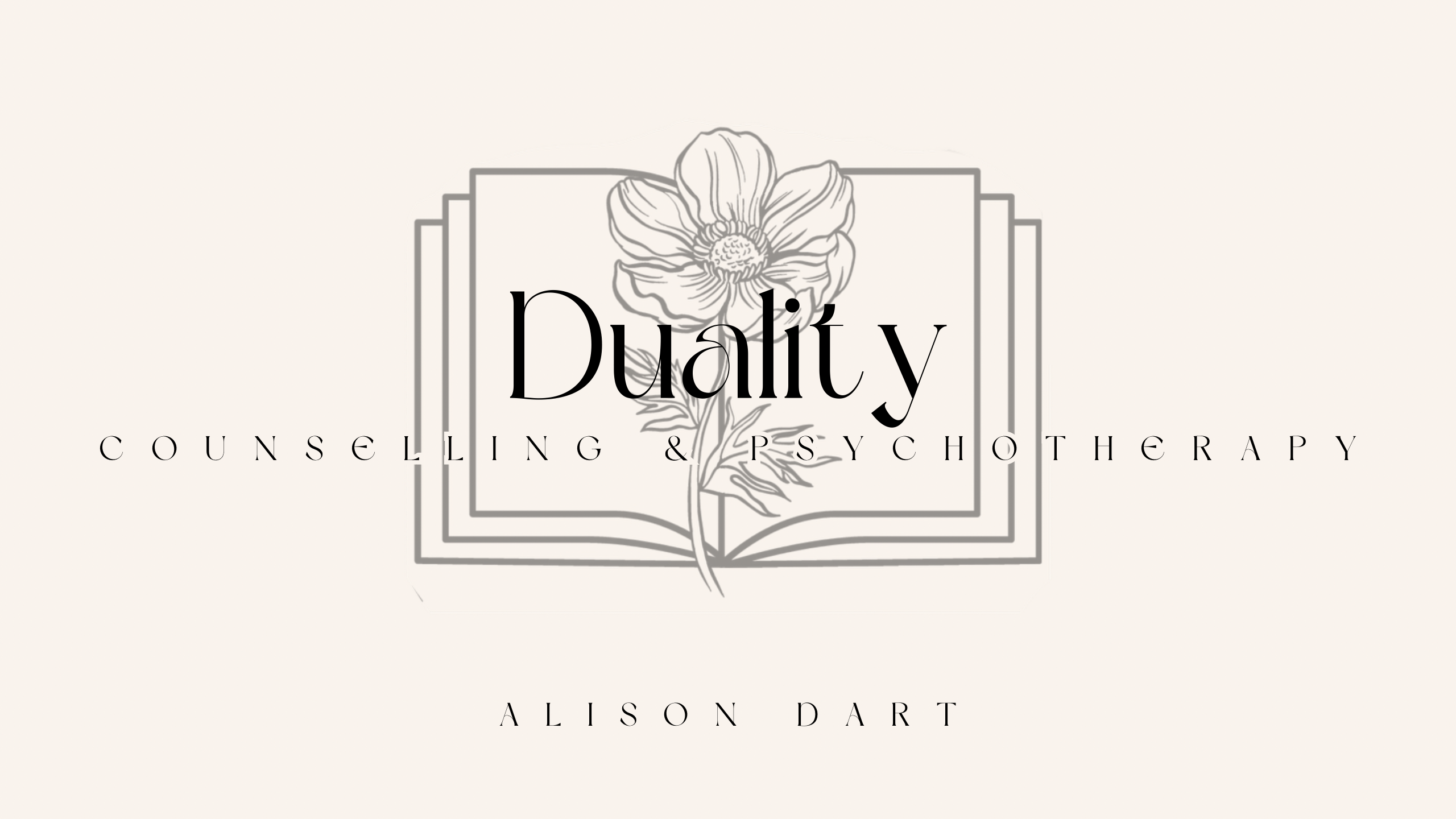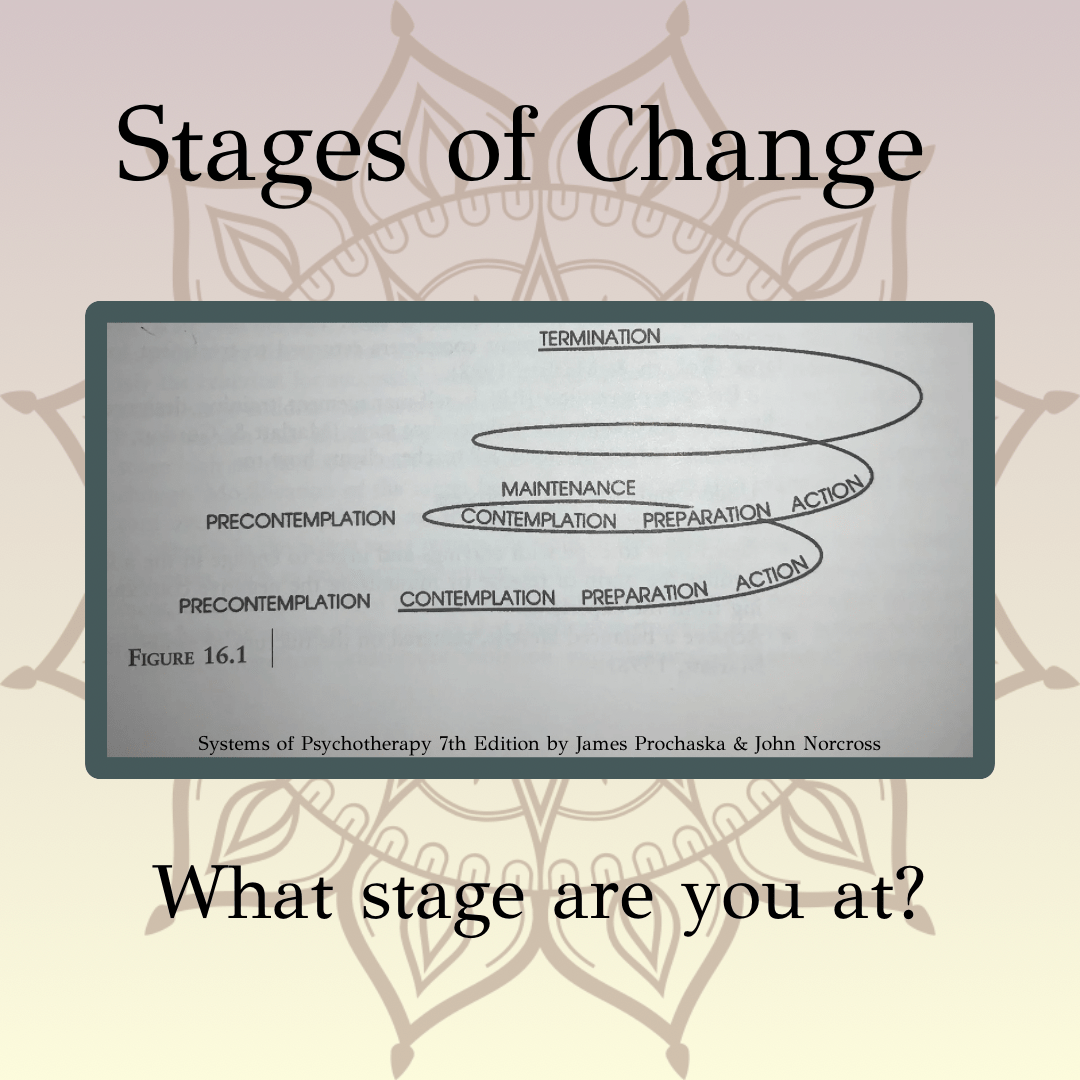Have you ever wondered why you struggle to stick to a change you’ve been desiring?
Have you felt shame and guilt when you repeat the same cycle of action and inaction?
Perhaps you begin to develop a habit, and it lasts weeks, or even months. Then, one day, you find yourself losing the inspiration to continue, reverting to your old self and wondering what went wrong.
Well, there’s a psychotherapeutic description for the spiral you might find yourself falling down. If you want to learn more about how to overcome the challenges in whatever phase of the cycle you’re in, read on.
It’s called The Stages of Change, and at each stage, different strategies are used to encourage movement into the next phase.

First Stage – Precontemplation
In this phase, one is unaware of any potential problem behavior or something they want to change; hence, it’s not in their thoughts as something that requires action. It’s possible for people in this stage to desire change, even though they may not be ready to participate or believe it’s possible. If a person has been pressured to seek help in this stage, they may show signs of changing while under pressure, but will revert as soon as that pressure is off.
“Resistance to recognizing a problem is the hallmark of precontemplation.” (Systems of Psychotherapy by James Prochaska & John Norcross)
Strategies:
It’s difficult, or nigh impossible, to move out of a behavioral pattern that you’re unaware of. Others may try to explain the problem behavior to you, even encouraging you to seek professional assistance. Often, a triggering event highlights the problem behavior or situation as an issue. This could be a health issue, financial trouble, emotional turmoil, relationship strain, or any other stressful situation arising with the behavior as the primary cause.
The person must acknowledge their behavior as something that requires adjustment and increase awareness of the impact the behavior has (whether on others or themselves) to continue to the next stage.
Second Stage – Contemplation
In this stage, the person has become aware of an issue that requires some sort of change and is genuinely considering what they will need to do to make it happen, though they are not yet ready to put it into action. People can remain in this phase anywhere from a few days to years. They tend to get stuck considering their options or are perhaps scared to make any serious effort to change. It can be considered self-sabotage because, while they are aware of a change they need and desire to make, they make excuses to keep themselves away from the new and unknown. In this way, they don’t have to experience failure, even though this is quite often a key element in lasting change.
Strategies:
To move onto the next phase, there are a few things you can do. The first recommendation is to make a firm decision: you need to decide that making change is more important than whatever is holding you back.
It may help to analyze what is holding you back. Is it fear? Self-doubt? Criticism? Consider how remaining stuck in the behavior is benefiting you (this is why you might not be ready to change) and how it is harming you (bringing awareness to this will help you see why you need to change). If you need further encouragement, consider evaluating how making steps toward change will benefit you and those around you. Writing it down will make it clearer than only thinking it through.
Begin making a plan of what the change may require and what you’ll need to do towards it. Break it down into smaller steps that make it more manageable. Focusing only on the larger outcome can feel overwhelming and leave you in a freeze state.
Start making small, baby steps. The more manageable and repeatable these steps, the more likely you’ll be to make the next step as each achievement releases feel-good chemicals.
Third Stage – Preparation
This next stage is where intention and action converge. The person begins making small steps towards the desired change. This can include reducing or delaying the original undesired behavior or implementing other steps towards increasing the desired change. The person has not yet made all the necessary steps or criteria for the change to be fully implemented, though they have complete intention of doing so.
Strategies:
If you didn’t make a plan in the previous stage, this is the time to make one. With momentum building towards making the change, creating a plan can inspire greater action to be made.
Set out your priorities regarding your desired change, as it’s possible it will clash with other values in certain circumstances.
Define your goals according to the S.M.A.R.T system (specific, measurable, achievable, relevant, and time-bound) as this summarizes your goal in such a way that you know what you need to do by what time.
Once all this has been done, the next and most important step is to dedicate yourself to the plan you’ve created, to the goals you desire to achieve for the following stage.
Fourth Stage – Action
In this stage, the person modifies their behavior, environment, and experiences to overcome the original problem and complete the change. It is one of the most desired states for people, as action is often equated with change. As such, these shifts are often much bigger, becoming more noticeable and receiving greater acknowledgment from others, such as family, friends, and coworkers.
A person is classified as being in this stage if they have been successfully void of the original problem anywhere from 1 day to 6 months. This can mean complete abstinence, as in the frame of smoking or drinking. You will know what the achievement of action is for you.
Strategies:
Remain aware of the influences that might tempt you into old patterns of behavior, including social influences, environmental triggers, and emotional situations.
Control these influences or excuse yourself when necessary. It’s in these times that it’s important to know your priorities and goals so that you may stay motivated, as well as what was holding you back in the first place (recall the contemplation stage) to prepare yourself to overcome it.
Fifth Stage – Maintenance
In this stage, the person’s focus is on maintaining the change to prevent a return to the original behavior or problem. This can mean continued efforts to control external factors that act as temptations, as well as developing personal habits of action, positive thinking, and emotional stability.
This stage can last months, and it’s often indefinite. In some circumstances, this stage can last a lifetime (such as for chronic addiction).
Strategies:
The aim here is to stabilize the changes in behavior for long-lasting achievement.
You may have fewer temptations as time goes on, but it’s important to remain aware of what triggers thoughts or actions into previous behavior to manage the emotional and physical reactions to it.
It may be helpful for you to talk to someone at this stage if you feel tempted to fall into old patterns. Discussing what’s going on for you can bring awareness to the triggers and assist in helping you recall all you learned along the journey, including why you started.
Recycling
Change is not often achieved on the first attempt, and in this stage, the person cycles through the stages one or more times, sometimes returning to the precontemplation phase (whether through circumstances or negative feelings). This is a common experience for individuals as they attempt to adjust and modify behavior.
Strategies:
Understand relapse as a process and be open to learning from each experience.
Develop the ability to identify and manage high-risk situations.
Learn how to manage temptations and cravings, whether this involves a substitute, distraction, or physical and emotional stability.
Final Stage – Termination
This is considered the final stage of change, when the original undesired behavior or situation is completely void with no chance of returning. It is the end of the cycle when all temptation has ceased and no effort is put into preventing relapsing.
Though these stages are displayed and explained as individual and distinct, it’s more of a scale, as people shift between stages and don’t always proceed in a linear manner. It’s presented as a spiral that can have many loops, but they do not regress all the way back from where they came, each time learning from the previous experience.

When people relapse, there are often feelings of embarrassment, guilt, and/or shame that can further prevent an individual from attempting again. This is when they repeat the precontemplation stage, which they can remain in for extended periods of time.
The stage a person is in is important in learning how to move forward, and the further along they are, the more likely they are predicted to move through to the rest of the stages.
As another note, when two people are facing change, there can be challenges and conflict when they are at different stages. They progress at different times and can get frustrated that the other is either taking too long or moving too quickly.
In conclusion, understanding the stages of change can illuminate the path to personal growth and transformation. Whatever stage you find yourself in, each phase offers valuable insights and strategies. The journey is rarely linear; it’s a dynamic process where setbacks and relapses are natural. What’s crucial is learning from each experience, leveraging newfound awareness, and persisting with determination and compassion towards oneself. By embracing this cyclical nature of change and employing tailored strategies at each stage, individuals can empower themselves to navigate challenges, overcome barriers, and ultimately achieve lasting transformation. Remember, the journey towards positive change is not just about reaching a destination but about embracing the growth that happens along the way.
If you’re ready to take the next step towards personal transformation, start by applying the strategies discussed in this article to your own life. Whether you’re contemplating change, preparing to take action, or maintaining your progress, know that you have the power to shape your future.
Comment below how you’ll continue to take action and make moves towards your goals today, I’d love to hear from you
The above information can be found in Systems of Psychotherapy: A Transtheoretical Analysis Seventh Edition by James Prochaska & James Norcross, Chapter 16, page 492.













